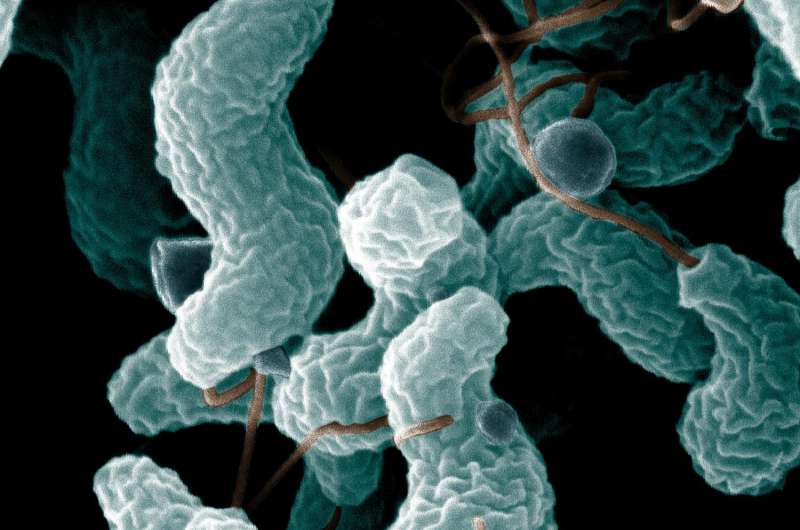February 13, 2019 report
Study suggests global warming could cause more cases of food poisoning

A team of researchers from the University of Guelph and the University of Toronto reports evidence that as the planet heats up, humans may become more susceptible to food poisoning. In their paper published in Royal Society Open Science, the group describes models of fly population increases caused by increases in temperatures in Canada in the coming years, and why they believe such increases will lead to more cases of food poisoning.
Campylobacter bacteria are a group of bacteria species that together account for a very large number of cases of food poisoning annually. The researchers note that one such species is behind the most common type of gastrointestinal illness in Canada— campylobacteriosis. Notably, the group includes such species as C. jejuni and C. coli. Prior research has shown that the bacteria can make their way into the human GI tract via consumption of contaminated food (usually meat) and sometimes by handling infected animals. The main reservoir of the pathogen is chickens.
Unfortunately, despite its pervasiveness, it is still not clear how, exactly, the bacteria move through a population. Campylobacteriosis infects people in Canada more in the summer than other months, and flies have been found with the bacteria on their bodies; notably, flies are most active in summer. For these reasons, researchers believe that flies may be a vector for human infections. In this new effort, the researchers have worked under the assumption that flies are a vector and they explored what might happen if more flies were to appear in Canada each summer as the planet warms—prior studies have shown that fly eggs hatch more quickly in warmer temperatures, allowing the insects to reproduce more effectively.
To learn more about what might happen with fly populations, the researchers built models that mimicked fly population numbers in Canada over the past 12 years and then used it to predict population changes under global warming conditions in the future. They report that their models showed fly populations increasing to the point that cases of Campylobacter food poisoning could double by the year 2080.
More information: Melanie Cousins et al. Modelling the transmission dynamics of Campylobacter in Ontario, Canada, assuming house flies, Musca domestica , are a mechanical vector of disease transmission, Royal Society Open Science (2019). DOI: 10.1098/rsos.181394
© 2019 Science X Network

















